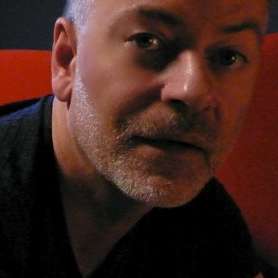Take a shepherd and his flock, sprinkle with gods in thrall to love and jealousy: the result is a "heroic pastoral", a specific sub-genre of French opera of the 18th century. Bringing the conventions of this innocent genre into his Titon et l'Aurore, composer Jean-Joseph de Mondonville artfully mixed French dance and Italian melodic effectiveness. The result was a deliberate attempt to pour water on the flames of the notorious 1753 "Querelle des Bouffons" controversy, which set Italian spontaneity against the outdated gold of French lyric tragedy.
Staged by puppeteer Basil Twist and broadcast live from the Opéra Comique on 19th January, the work will be visible to medici.tv subscribers for three months: let's take advantage of this delicious object in this dreary period! Visual references dive into the culture of 20th century animation: the spectacular silks which envelop Éole pay homage to those of dancer Loïe Fuller; diaphanous angels come straight out of the universe of Tim Burton, stacks of sheep evoke Aardman Studios. The New York based puppeteer, assisted in this staging by Constance Larrieu, takes the conventions of the pastoral genre word for word and then twists them in a way that is occasionally disturbing but never bereft of humour.
By the magic of video projection, the silk turns into flames or wind; plastic foam becomes clay into which life is breathed. Still, the lighting levels required for the video filming does lose something of the mystery and magic of the animations and they sometimes saturate the stage. Also, some timid attempts at choreography (the villagers' round) fail to pick up the energy of the music. In a sign of the times, the blue LED of the 21st century is definitely the emblem of visual opulance in the final triumph.
As to the music, one can't fail to observe that in this repertoire, the American William Christie is still well ahead of our French conductors – of all generations – both in conducting skill and expressivity. Unsurprisingly, Les Arts Florissants are in perfect balance and their entries are impeccably timed, but beyond these fundamentals, the poetic discourse and the finely calibrated release of energy bring a marvellous depth to the character arias like the famous "Que l’Aurore tarde à paraître". The organic rhythm of the recitatives and the development of duets into chorus numbers are admirably managed.
The virtuosic nature of the string writing poses no difficulties for an orchestra that's as much at ease in the "Vite" of the overture as in Éole's "Fiers Aquilons". And it comes as no surprise that with such a comfortable backing, the cast of singers are at their absolute best. Marc Mauillon (Éole) gives admirable breath control and projection, Gwendoline Blondeel (l’Aurore) vocalises with boundless skill, Julie Roset (Amour) combines superb timbre and flexible agility. Although a little stiff on stage, Reinoud Van Mechelen plays Titon with seductive timbre, not without attack in his final arietta. As Prométhée, Renato Dolcini has ease in his high register and displays fine authority in "Qu’aujourd’hui l’argile respire". In a portrayal of Palès much à la drama queen, Emmanuelle de Negri moves between seductive, menacing and frankly hilarious. Her vocal master is impressive and the freedom of the vengeance duet with Éole is delirious.
Some of the secondary roles are tricky: Maud Gnidzaz, Virginie Thomas and Juliette Perret incarnate strange nymphs whose vegetable costumes remind one of Carmen Miranda fallen into a swamp. Christie takes perfect account of the work's aesthetic, which pays fulsome homage to Rameau but heads firmly towards the symphonic. The whole evening is a triumphal feast for the senses.
Translated from French by David Karlin




